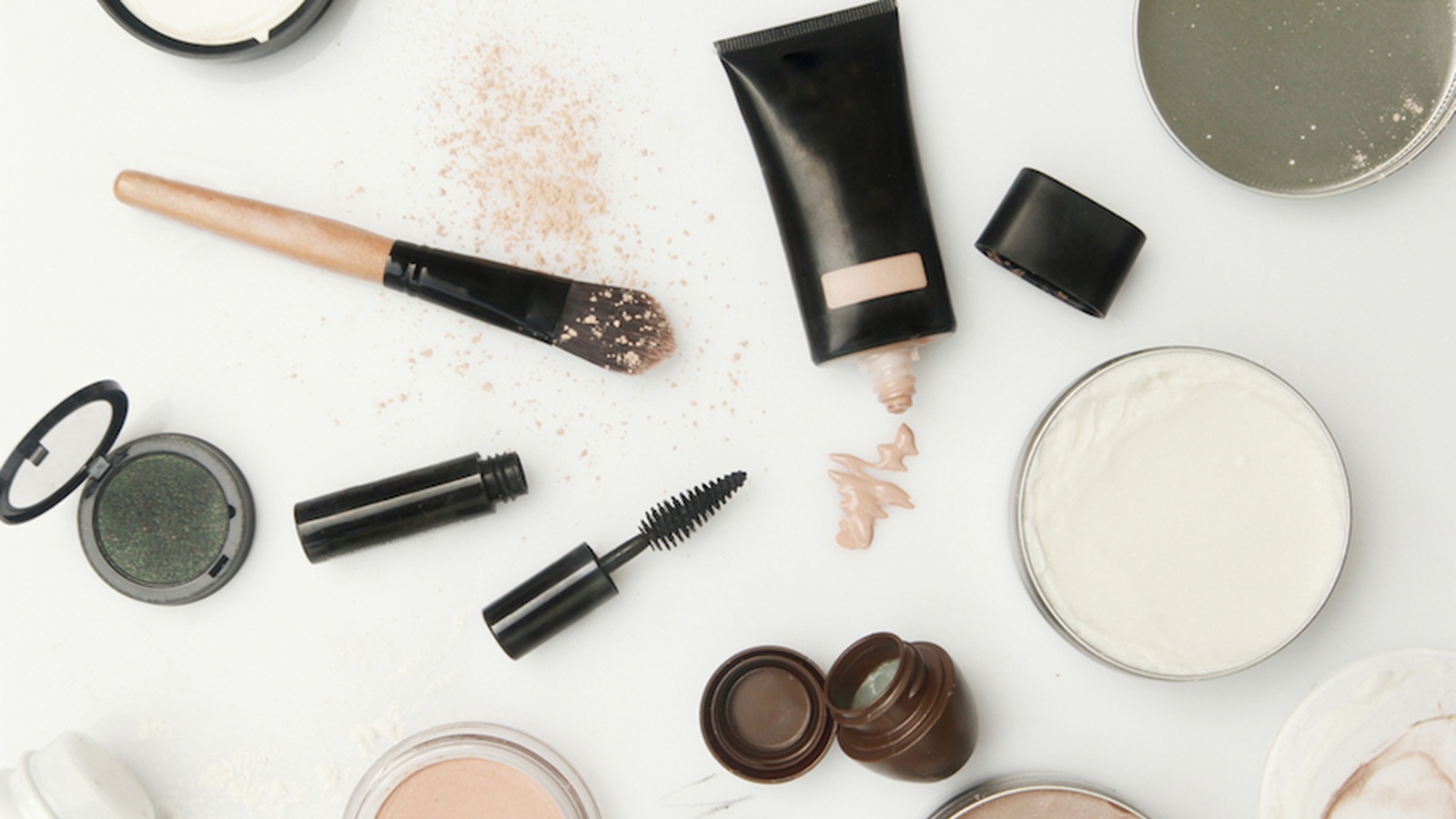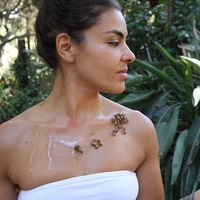High Price Of Beauty: 17 Ingredients to Avoid Like The Plague
Although I made the switch to organic food and cleaning products years ago, I still couldn’t give up on my tried and true mainstream beauty products. Of course I’ve heard mainstream beauty products contained dangerous toxins, but I just didn’t feel like I had the money to spend on expensive natural products.
It’s not easy to throw out your whole beauty supply and invest in expensive natural products until you find out how bad they are for you. I wasn’t ready to throw out my fun pallet of colorful eye shadows, the tried and tested eyeliners that lasted through crazy party nights, and the dramatic lipsticks (that contain lead) that made my lips pout with color. But these products weren’t on my body long, so I figured they couldn’t possibly have any lasting effects.
Your Skin Is An Extremely Vulnerable Organ
Contrary to mainstream thought, our skin is far more susceptible to toxins than our digestive system! If I had to choose one area to invest in organics, I think it would’ve been far wiser for me to invest in non-toxic beauty products than organic fruits and vegetables. Evidence presented at the 1978 Congressional hearings, showed strong proof of how the absorption of nitrosodiethanolamine (NDELA), a carcinogen found in shampoos and other beauty products, was shown to be over 100 times greater when absorbed via skin versus the mouth.
Our digestive system is built to fight toxins. When we consume toxins, such as pesticides in fruits and vegetables, the enzymes in our saliva and stomach manage to break down a lot of them. Our livers and kidneys also help in detoxing the pesticides – and generally many of the toxins are flushed out.
Unfortunately, the toxins in mainstream beauty products bypass our liver and kidneys and go straight into our bloodstream and tissues. This is because we have no defense systems that work to protect us when toxins are absorbed through our skin.
Even when we put shampoo or conditioner on our scalp for a few seconds, the toxins are immediately absorbed by the 20 blood vessels, 650 sweat glands, and 1,000 nerve endings that make our scalp their home. From there the toxins travels throughout our blood stream and end up in our entire body.
How Did The Industry Get So Toxic?
According to Ovsanna Mkrtumyan of Zatik, one of the leading natural and organic beauty lines on the market, nobody cared what ingredients were in beauty products until recently; they only cared about how these products made you feel. Many skin care products and cosmetics are loaded up with fillers, such as petroleum-based ingredients that are then squeezed into a fancy package. In the midst of what Mktumyan calls a “plastic soup”, are a mere few drops of good things.
Consumers buy skin care products that claim to have essential vitamins and offer enticing results such as getting rid of wrinkles. But they are really just paying for fillers and a brand name. These plastic products often have an immediate beautifying effect – but the long-term effects are devastating. “It’s like trying to patch a hole in a wall with a cheap filler,” says Mkrtumyan. “You’re going to have to keep redoing it. These skin products do cover up blemishes, but they don’t repair the hole in the wall. ”
What’s worse is that many ingredients in mainstream products, such as petroleum and mineral oil, actually clog pores and impair the skin’s natural ability to release toxins. So they actually speed up the aging process!
Beauty Isn’t Instantaneous
These days, people are slowly waking up to the fact that beauty is a gradual process. Although there are amazing natural beauty products out on the market, they aren’t necessarily going to cover up the blemishes as smoothly as mainstream products would.
“You wouldn’t expect to have amazing results with Vitamin C if you only start to take it once you have a fever. You have to start taking it as soon as you know your body is prone to getting a cold. When you feel weak, aren’t getting enough sleep, etc. That’s the way natural, organic skin care products work, too. Aging is a natural process that is sped up by mineral deficiencies. You’re not going to put an organic product on and see your wrinkles disappear. But if you continue to take the mineral and vitamin-rich organic products, you will eventually see results,” explains Ovsanna.
You Can’t Trust Any Old “Natural” and “Organic” Label
Not only does the FDA let tons of toxic products go by without raising an eyebrow, but beauty care products can be labeled “natural” without any sort of regulation from the FDA. Many companies take advantage of this and slap the term “natural” on their bottles even when their products are full of synthetic chemicals.
What’s more, tons of products such as mercury, petroleum and led, may be naturally produced, yet be extremely toxic for our bodies.
An “organic” label is more strictly regulated and are only supposed to be used if all ingredients are certified-organic. However, products can put a “made with organic ingredients” label on as long as they contain a minimum of 70 percent certified-organic ingredients. That means that 30 percent of the product is likely full of toxins! It doesn’t make it organic; it just makes it not as bad.
Ingredients to Avoid Like the Plague
There’s a few toxins you should be especially on the look-out when shopping for your beauty care. But beware, as not all these ingredients are necessarily even listed on certain products. Here’s the list:
Lead: This is a proven carcinogen found in lipstick and hair dye. It’s never listed because it’s considered a contaminant, not an ingredient.
Parabens: This “preservative” is linked to cancer, endocrine disruption, and reproductive toxicity. It’s thrown into a ton of major beauty products.
Phthalates: There are proven links to this ingredient and endocrine disruption, liver/kidney/lung damage, and cancer. It can be found in many deodorants, lotions, perfumes, and fragrances – even though it’s been banned in the EU and California.
Mercury: Everyone knows this is toxic – but it has sneaked into many mascaras and some eye drops. It’s proven to be an allergen that impairs brain development.
Formaldehyde: This preservative has been banned in the EU since it’s considered a probable carcinogen and irritant. But in the US, it’s found in shampoos, nail products, hair dye, and fake eyelash adhesives.
Silicone-derived emollients: Tons of beauty products use these to make a product feel soft. Unfortunately, these emmolients don’t biodegrade, so they prevent skin from breathing – and thus, have been linked to skin irritation and tumor growth.
Ethoxylated surfactants and 1,4-dioxane: This probable carcinogen is never listed under its full name, so just be sure to stay away from any ingredient with the letters “eth”. It’s not listed because it’s a by-product made from adding carcinogenic ethylene oxide to make other chemicals less harsh. The Environmental Working Group has found 1,4-dioxane in 57 percent of baby washes in the U.S.
Talc: It’s been linked to ovarian cancer and respiratory problems, as it is similar to asbestos in composition. It’s found in eye shadow, blush, baby powder, and deodorant.
Polyethylene glycol (PEG):This penetration enhancer is used in many products, and is usually contaminated with two carcinogens: 1,4-dioxane and ethylene oxide.
Paraphenylenediamine (PPD): It’s toxic to the skin and immune system, and found in many hair products and dyes.
Mineral oil: This by-product of petroleum actually impairs the skin’s natural ability to release toxins. It’s found in styling gels, baby oil, and moisturizers, styling gels.
Coal Tar:This carcinogen is used in dry skin treatments, anti-lice and anti-dandruff shampoos. It’s banned in the EU but is still used in North America – and is often secretly listed as a color plus number, i.e. FD&C Red No. 6.
Sodium lauryl (ether) sulfate (SLS, SLES):You know how it’s become really popular for soaps to be super-foamy? Well, many foamy soaps are made from this former industrial degreaser which although is extremely foam-producing, gets absorbed into the body and irritates skin.
Triclosan: This has been linked to cancer and endocrine disruption, but it’s in many deodorants, antibacterial products, and hand sanitizers.
DEA/TEA/MEA: These likely carcinogens are used as emulsifiers and foaming agents for shampoos, soaps, and body washes.
Fragrance/Parfum: There are tons of hidden chemicals in this ingredient, such as phthalates. It has been linked to allergies, asthma, headaches, and dizziness.
Oxybenzone: This is active ingredient in chemical sunscreens accumulates over time in fatty tissues. It is linked to cellular damage, allergies, hormone disruption, and low birth weight.
There IS Quality Non-Toxic Beauty Care Out There!
A few decades ago, opting for truly natural beauty products meant you were sacrificing efficiency. But fortunately, natural beauty care has made huge progress. The brilliant use of superfoods as beauty care ingredients has made many natural products even more effective and longer-lasting. For example, Zatik’s hair products include maca, which strengthens follicles and causes hair growth. The Zatik beauty line also incorporates a lot of antioxidants and health supplements. For example, pumpkin oil, which is included in Zatik’s face creams and serums, naturally firms and tightens skin in a very effective way.
There is an abundance of options in the natural beauty market, so you can express yourself as fully as you like in a healthy, and safe way. Boycott the mainstream companies that are poisoning the world with their toxins. Your consumer investments really can make a difference. Once enough of us make the switch to healthy, and safe beauty products, the mainstream beauty lines will have no choice but to rid their products of toxins, as well.
Do you have a passion for nutrition & natural healing?. Learn more about the Food Matters Nutrition Certification Program here.


